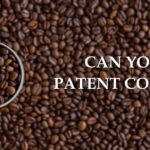The Pannu Factors and AI-Assisted Inventions

The USPTO issued guidance which states that, while AI may be used to assist in the inventorship process, each and every claim in a patent must include a significant contribution by a human inventor. You may be wondering, what is a “significant contribution” to an invention? In this post, we seek to answer that question.
The Rule for Evaluating Various Contributions
The USPTO’s guidance states that the analysis for whether a single human who was assisted by AI made a significant contribution to a claimed invention is the same as the analysis for whether one particular human in a group of human co-inventors made a significant contribution to the invention. When evaluating contributions made by groups of human co-inventors, Courts have looked to the Pannu factors, from the 1998 Federal Circuit case Pannu v. Iolab Corp., 155 F.3d 1344.
The Pannu factors state that each inventor must contribute in some significant manner to the conception or reduction to practice of the invention. Each inventor must also make a contribution to the claimed invention that is not insignificant in quality, when that contribution is measured against the dimension of the full invention. Finally, each inventor must do more than merely explain to the real inventors well-known concepts and/or the current state of the art. Failure to meet any one of these factors precludes one from being named an inventor.
This post will focus on an analysis of the first factor because that is the factor which was the focus of the USPTO’s guidance.
Analysis of Factor One – Being Involved in the Idea’s Conception is Key
The first factor requires each named inventor to significantly contribute to the conception of the claimed invention. In other words, the single human assisted by AI must have significantly contributed to the definite and permanent idea of the complete and operative invention as it is subsequently applied in practice. Merely recognizing that an output of an AI system can be reduced to a useful invention is not enough if the human did not also contribute the conception of the idea itself. Reduction to practice, on its own, may not be enough to establish that a human has made a significant contribution to a claimed invention. Humans who create and build an invention which was conceived of by an AI system have not met the standard set by the first Pannu factor, but humans who take an AI-generated output and make substantive changes to that output to arrive at the claimed invention may be properly considered an inventor.
Additionally, a person who designs, builds, or trains an AI system in view of a specific problem or with the goal of eliciting a particular solution could be properly considered an inventor. That is because the work of designing, building, or training the AI system may itself be a significant contribution to the invention subsequently created by that AI system. However, merely maintaining ownership or overseeing an AI system that is used in the creation of an invention may not be considered an inventor, because that person did not contribute to the idea or conception of the invention itself.
Takeaways and Conclusion
Importantly, the USPTO’s guidance states that “a rejection under 35 U.S.C. 101 and 115, or other appropriate action, should be made for all claims in any application that lists an AI system or other non-natural person as an inventor or joint inventor.” The USPTO has stated that AI-assisted inventions can be patentable, based on a case-by-case evaluation of the facts and circumstances surrounding a particular patent application. However, this mandate clarifies the importance of carefully highlighting the conceptual contributions of human inventors for each and every patent claim. A record of the facts surrounding those conceptual contributions of the human inventors may be very important in responding to the action taken by the USPTO when an AI system is listed as a contributing inventor.
The USPTO’s guidance also reiterates the requirement of the inventor’s oath which accompanies every patent application. The inventor’s oath includes a statement that the inventor believes themselves to be the original inventor, or an original joint inventor, of a claimed invention in the application. Because making false statements in the oath can subject applicants to criminal penalties, it is vital that you have a frank and detailed discussion with your patent attorney about how AI was used in your inventive process, and about which contributions you made to both the conception of the idea and the reduction to practice of the complete and operative invention that is defined by your patent claims.
For further information on securing patents for your AI-assisted inventions, schedule a consultation with the experienced patent attorneys at Kaufhold & Dix.
References:
Inventorship Guidance for AI-Assisted Inventions [Docket No. PTO-P-2023-0043], 89 Fed. Reg. 10,043 (Feb. 13, 2024) <https://www.federalregister.gov/documents/2024/02/13/2024-02623/inventorship-guidance-for-ai-assisted-inventions>
Pannu v. Iolab Corp., 155 F.3d 1344 (Fed. Cir. 1998).






